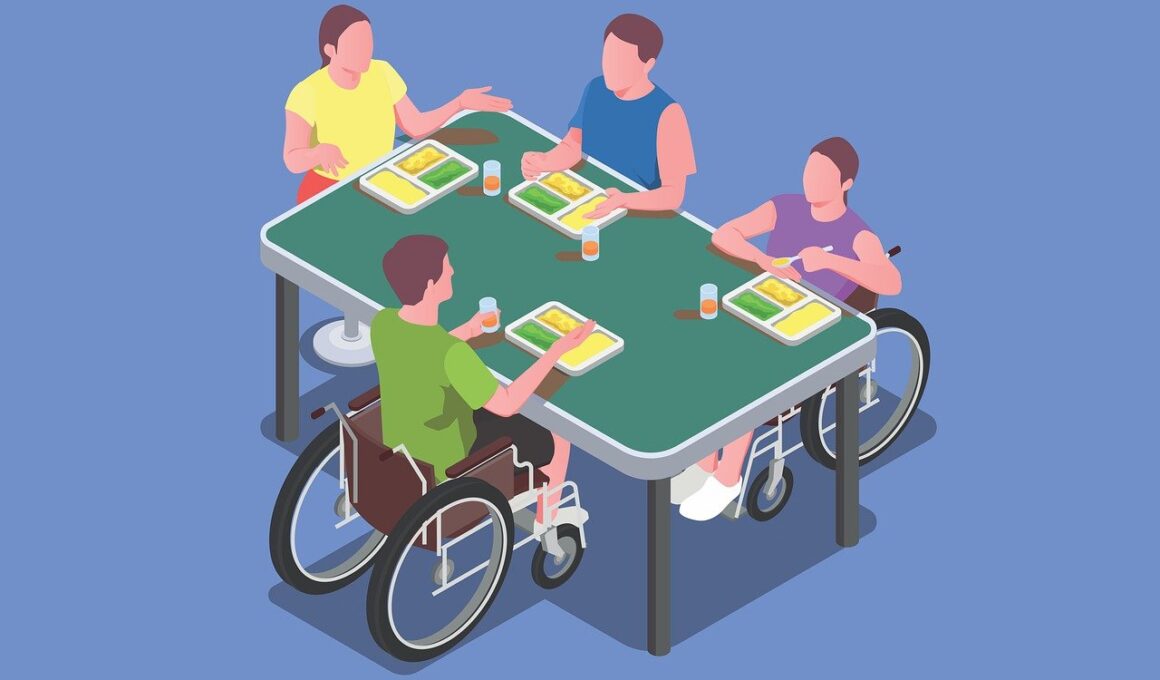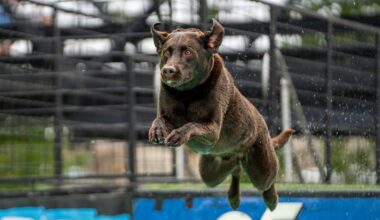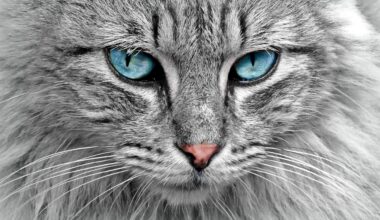Integrating Special Needs Cats into Multi-Pet Households
Bringing a special needs cat into a multi-pet household can be a rewarding experience. It also requires careful consideration and planning to ensure a smooth transition for all pets involved. Special needs cats often have unique challenges that demand understanding and patience. Begin by assessing your household dynamics and space to determine if it supports another pet. You will want to consider the needs of your existing pets, as well. Prepare a suitable environment for the newcomer, which includes a safe area for the special needs cat to feel at home. This can be a separate room where they can acclimate without overwhelming stimuli. If the special needs cat has mobility issues or requires specific accommodations, make adjustments to your space. Thoughtfully integrate them into the household with gradual introductions and positive reinforcement. Keeping a routine can also ease the transition for both the new cat and your existing pets. Each cat must feel secure and loved, fostering bonds within your multi-pet household. Communication with your vet about health requirements is also crucial.
Prioritize individual spaces for each pet to minimize territorial conflicts. Special needs cats may require extra support in their environments. Create vertical spaces, such as cat trees or shelves, which can give all your felines a chance to claim their territory uniquely. Designate separate feeding areas, litter boxes, and sleeping spots to avoid any competition over resources. Accessible litter boxes are especially important for special needs cats. You can use high-sided boxes with lower entry points to make it easier for them to access. Consider the individuality of each cat and their particular needs. Some cats thrive on social interaction, while others may be more solitary. Understanding their personalities can help in creating an atmosphere of mutual respect and cooperation. Monitoring interactions closely during the initial introductions is essential. This allows you to intervene if conflicts arise. Gradual, supervised meetings can help in injecting comfort into their introductions. Rewards can be used effectively to foster positive interactions. With dedication, care, and proper techniques, the integration can create a harmonious environment.
Behavioral Considerations for Special Needs Cats
Behavioral issues can arise when a special needs cat meets other pets in a household. These pets may be more vulnerable to stress than typical cats. Some special needs cats require extra patience in socialization. Anxiety can manifest through defensive behaviors, which ultimately complicate integration. Take time to observe your new pet’s behavior and identify triggers. Creating a calming space can reduce stress as they adjust to new surroundings. Consistent interaction and gentle affection can help them feel safe over time. Consider using pheromone diffusers to create an environment that promotes relaxation. Gradual introductions foster comfort and familiarity, which are essential for lowering anxiety levels. Watch the social dynamics among your pets and react accordingly. If tension escalates, consider re-evaluating the introduction process. It’s essential to train all pets to use positive reinforcement, keeping interactions pleasant and rewarding. Enrichment games and shared playtime can stimulate positive associations during interaction. Allow the special needs pet to take the lead in forming relationships. This respects their comfort levels and lets the other pets adjust accordingly.
A special needs cat may exhibit unique behavioral characteristics deserving special strategies for integration. Some might be more affectionate, while others could be skittish or frightened. Watch for signs of distress like hiding or hissing, signaling they’re not yet comfortable. Allow them space to explore at their own pace. Individual attention to both the special needs cat and other pets is crucial. It prevents feelings of jealousy and promotes smoother bonding. Enriching their environment with toys and activities helps all pets acclimate together. Consistent daily routines create a sense of security for every pet in the home. Integrating pet-friendly technology can enhance this living situation, such as interactive toys or automatic feeders. Adjust the daily routines according to needs and preferences. Whenever possible, make certain that every pet gets personal attention to foster a special bond with you and with each other. Providing individualized care contributes to developing strong, healthy relationships. Creating a stable environment where each pet feels loved and secure can lead to a joyful shared home filled with companionship.
Creating an Inclusive Environment
Establish inclusivity in environments for special needs cats in multi-pet households. Ensure every area aligns with your unique felines’ needs. Create a home that encourages exploration and minimizes stress. Multi-level surfaces enhance accessibility for all cats, particularly for those with mobility issues. Cats enjoy vertical spaces, which can act as safe zones for those needing a break. Soft bedding in quiet corners offers a refuge for particularly sensitive cats. Adapt your daily routines, allowing flexibility for every pet’s needs, including feeding times, play, or cuddle sessions. Additionally, addressing dietary restrictions or medical needs is fundamental. Consult your veterinarian for tips on dietary considerations unique to your special needs cat. Social settings can be managed by observing individual preferences and keeping group activities to a minimum initially. Design separate retreats during busy household moments, allowing each pet a chance to escape the commotion. Be mindful of potential conflicts or predatory behaviors amongst your pets, and adjust accordingly. Through a combination of environmental structuring and attentive care, inclusivity can transform multi-pet households into harmonious living spaces.
Positive reinforcement training is beneficial for integrating special needs cats into a multi-pet household. Providing rewards for desirable behaviors encourages exhibited traits positively. Implement basic commands initially, gradually introducing complex tricks after establishing rapport. Patience is paramount when teaching special needs pets. Their learning curves may differ, requiring a clear, supportive approach. Set realistic expectations for training sessions, maintaining them brief and enjoyable to prevent frustration. Incorporating play can make learning more interactive and engaging. Use toys to motivate and reward participation. Positive reinforcement builds confidence and helps in reducing anxiety, fostering a safe space in multi-pet dynamics. Consistency in commands and rewards across all pets reinforces healthy interactions. In a shared space, all pets should illustrate appropriate social behaviors, thus setting the foundation for positive interactions. Encourage cooperative activities, teamwork between pets can promote bonding, leading to lasting friendships. Adjust training based on each pet’s individual needs. Your patience and love show that every pet in your multi-pet household deserves the same level of attention and care, creating fulfilling relationships that flourish.
Continual Assessment and Adjustments
Regular assessments of interactions between special needs cats and other pets are vital for maintaining harmony. Monitoring behavior patterns helps identify areas where adjustments are necessary. Signs of distress such as growling or withdrawal indicate adjustments are required. Take note of positive interactions and relationships forming based on shared experiences, recognizing achievements. Be proactive in addressing conflicts before they escalate. Some pets may adapt quickly to a new environment, whereas others may require prolonged adjustments. A comprehensive understanding of each pet’s needs creates a favorable environment, facilitating deeper connections. When introducing special needs cats, it’s crucial to remain vigilant in observing their responses. Learn from the interactions and implement changes as necessary, whether it’s reorganizing spaces, adjusting routines, or adding enrichment activities. Where feasible, gather data on your pets’ behavior to refine your approach continuously. Linking similar milestones, such as successful interactions or positive responses to changes, reinforces positive growth. Establishing a baseline of peaceful coexistence among pets goes a long way in creating a nurturing multi-pet household. Through assessment and adaptation, transformative bonding moments will naturally emerge.
Through gradual introductions and behavioral training, your special needs cat will find their place in the multi-pet household. It’s important to remember that progress takes time and patience as each cat has distinct personalities and responses to new circumstances. As a caretaker, provide unconditional love and understanding, creating a thriving environment despite the challenges. Consistent assessment of all pets’ well-being cultivates a nurturing atmosphere conducive to relationships forming. Share experiences and adjustments you’ve noticed with fellow pet owners. This collective knowledge can aid in refining your approach towards multi-pet integration fostering a happy home. Online resources, community support groups, and veterinarian guidance provide advice and insights tailored to special needs cats. Engage in lively discussions with fellow pet owners through social platforms to share trials and tribulations. Contributing to communal knowledge allows a constant influx of innovative ideas and strategies for improvement. With each step taken toward a harmonious existence, great relationships will flourish within your household. Every pet in your home has its unique narrative worth sharing, ultimately building collective strength. Celebrate milestones, big or small, as they reflect genuine progress in your special needs pet’s integration journey.


